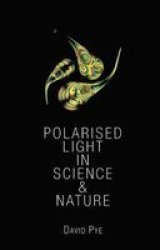Description
Polarized light is a type of light that can be seen when it is split into its constituent colors. This is done by placing a piece of material between the light source and the observer. When the light is split this way, the observer can see the different colors of light rotating around the object. This is because the light is travelling in different directions at different speeds.
Polarized light is a common feature of nature. Insects and other animals are able to see it and use it to their advantage. For example, insects can use polarized light to see in the dark and scientists can use it to study objects.
misconceptions about polarized light are common among humans. Scientists who should know better often assume that it is an obscure topic of specialised interest in only a few rather isolated areas. However, polarized light is a universal feature of our world and most natural light is at least partially polarised. This makes it easier for scientists to study objects and it is a beautiful effect.
We humans cannot see when light is polarised and this leads to unfortunate misapprehensions about this aspect of nature. Even scientists who should know better often assume that it is an obscure topic of specialised interest in only a few rather isolated areas. In fact, it is a universal feature of our world and most natural light is at least partially polarised. In the Animal Kingdom, insects and other animals exploit such natural polarisation in some fascinating ways, since they do not share this human deficiency and can both detect and analyze polarisation. It may be our unfamiliarity with this aspect of light that also makes many people think it is a "difficult" subject, yet the basis is extremely simple. When these misconceptions are overcome, the phenomena associated with polarisation are found to be important throughout science and technology - in physics, astronomy, natural history, geology, chemistry and several branches of engineering, as well as crafts such as glass-blowing and jewellery. They also involve some very beautiful effects, most of which are easy to demonstrate. Our general unawareness of what we are missing is indeed a great pity. This book hopes to put all this right and enrich its readers' perception of their world.
